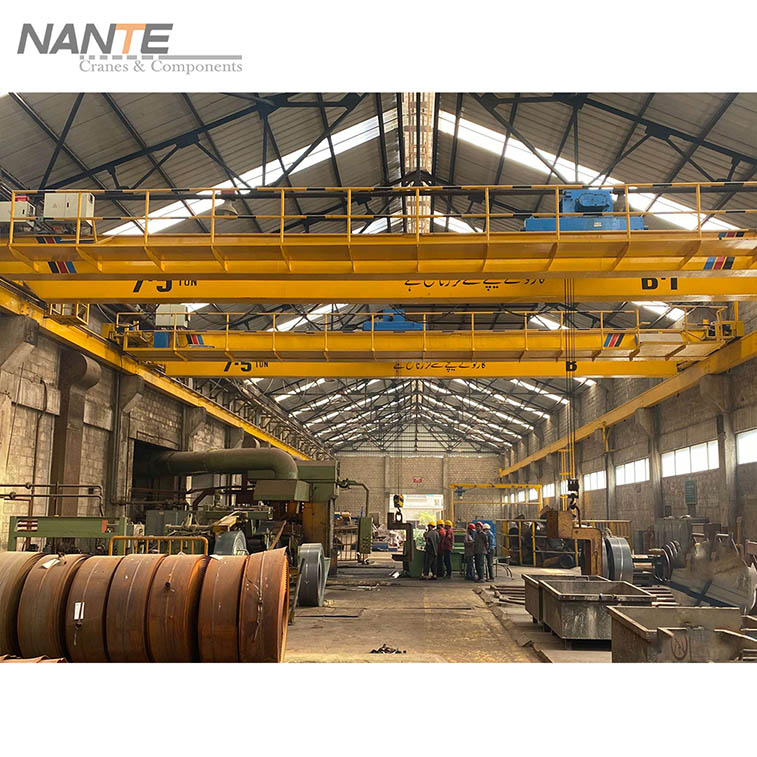Unlock the Potentials: What is a Crane Used for in Different Sectors
Date: 2024-06-20 Share:
A crane is an essential machine employed for lifting and moving heavy loads. Its central mechanism involves a combination of hoisting systems, cables, and pulleys working in unison to manage weighty objects. Historically, cranes date back to ancient civilizations where they facilitated the construction of monumental structures, including the pyramids of Egypt and the temples of Greece. With advancements in technology, cranes have evolved to cater to a wider array of applications in modern sectors.

Types of Cranes
Tower Cranes
Tower cranes are ubiquitous on construction sites, particularly for high-rise buildings. These cranes are known for their exceptional height and lifting capacity. Standing tall with a vertical mast and a horizontal jib, tower cranes can reach considerable heights, enabling them to transport materials to elevated locations seamlessly. Their design allows them to rotate 360 degrees, offering unmatched maneuverability and efficiency.
Mobile Cranes
Mobile cranes offer versatility and flexibility due to their mobility. These cranes are installed on crawlers or tires, making them easy to move from one location to another. Mobile cranes are perfect for short-term projects as they can be quickly deployed and set up. They are widely used in construction, transportation, and rescue operations, providing the ability to access hard-to-reach locations with ease.
Overhead Cranes
Overhead cranes, also known as bridge cranes, are primarily used in industrial environments such as manufacturing plants and warehouses. These cranes consist of parallel runways with a traveling bridge spanning the gap. Overhead cranes are instrumental in heavy-duty lifting tasks, moving materials across large distances within a facility. Their design ensures operation efficiency, thereby enhancing productivity in various industries.
Marine Cranes
Marine cranes are engineered to operate in marine environments for tasks involving loading and unloading ships. These cranes must withstand harsh weather conditions and corrosive saltwater environments. They are equipped with advanced features that enable them to handle bulky cargo and containers safely and effectively. Marine cranes are crucial for port operations, drastically improving the efficiency of maritime logistics.
As one of the famous brands in the production of cranes and crane parts, Nante Crane is dedicated to research and development of lifting and material handling technologies. We adopt innovative ideas and design in developing new products and services. Backed up by a wealth of industrial experience, we can provide customers with high quality lifting equipment and components.
Applications of Cranes in Construction
Building Large Structures
High-Rise Buildings
Cranes play a pivotal role in constructing high-rise buildings. Tower cranes, in particular, are essential for lifting heavy materials like steel beams, concrete slabs, and construction equipment to great heights. Their ability to operate at dizzying elevations makes them indispensable in urban construction projects where space is limited, and vertical expansion is necessary.
Bridges
The construction of bridges often encompasses lifting and positioning massive components such as girders, arches, and suspension cables. Mobile cranes and tower cranes are extensively used to maneuver these elements into place with precision. Their involvement ensures that bridge structures are erected securely and efficiently, supporting the expansion and maintenance of critical infrastructure.
Infrastructure Projects
Roads and Highways
The development of roads and highways frequently requires the use of cranes to handle heavy materials and equipment. Mobile cranes are particularly effective in these scenarios due to their ease of transport and rapid deployment capabilities. They assist in the placement of prefabricated road segments, culverts, and other infrastructural components, facilitating the smooth progression of road construction projects.
Dams
Dams serve as vital structures for water management, hydroelectric power generation, and flood control. Construction and maintenance of dams necessitate the handling of enormous quantities of concrete, steel reinforcements, and other substantial materials. Overhead cranes are often deployed in dam construction for their robust lifting abilities and capacity to traverse large spans, thereby aiding in the meticulous assembly of these colossal structures.
As one of the famous crane production and manufacturing brands, Nante Crane is committed to helping our clients reduce investment cost, improve production efficiency, and economize energy consumption. Nante Crane’s main products include industrial cranes, offshore cranes, Launching Crane, electric hoists, crane travel unit, mobile power supply system etc. with reliable and excellent performance.
Industrial Uses of Cranes
Manufacturing Facilities
In manufacturing facilities, cranes are indispensable for assembling heavy machinery and moving large products or components within the plant. Overhead cranes, in particular, are prevalent due to their ability to transport materials across vast areas without interfering with ground-level operations. They are crucial in streamlining production processes, ensuring that materials are efficiently moved to assembly lines, storage areas, or shipping zones. By enhancing operational efficiency, cranes help manufacturing facilities meet their output targets and maintain high productivity levels.
Warehousing and Storage
Cranes play a critical role in warehousing and storage operations, where the rapid and safe handling of goods is paramount. Gantry cranes and overhead cranes are commonly used to move large and heavy items within warehouses. These cranes facilitate the stacking and retrieval of items, optimizing the use of vertical space and reducing the need for human labor in high-risk areas. By enhancing storage efficiency and ensuring the secure handling of goods, cranes contribute significantly to the streamlined functioning of logistics and supply chain operations.
Specialized Uses of Cranes
Shipping and Ports
Loading and Unloading Cargo
In shipping and port operations, cranes are essential for loading and unloading cargo from ships. Port cranes, such as gantry cranes and container cranes, are designed to handle the immense weight and size of shipping containers, bulk cargo, and other large items. These cranes are engineered to operate efficiently under challenging conditions, ensuring that cargo is moved quickly and safely, thereby minimizing downtime and improving turnaround times for ships.
Container Handling
Container handling is a specialized application in ports where cranes play a pivotal role. Container cranes are designed to lift and move standardized shipping containers with precision. These cranes are equipped with sophisticated control systems that enable them to stack containers in high-density configurations, maximizing the use of available space. By ensuring the efficient handling of containers, cranes support the smooth operation of global trade networks and supply chains.
Mining Operations
Excavation Processes
In mining operations, cranes are utilized for various excavation processes, including the removal of overburden, extraction of ore, and transport of mined materials. Mobile cranes and crawler cranes are often used in these applications due to their ruggedness and ability to operate in harsh environments. These cranes help in lifting heavy equipment, maneuvers large rocks, and transporting extracted minerals to processing facilities. By facilitating these critical tasks, cranes enhance the efficiency and safety of mining operations.
Safety Measures and Regulations for Using Cranes
Operator Certification and Training
Ensuring the safe operation of cranes necessitates comprehensive operator certification and training programs. Operators must be thoroughly trained in the technical aspects of crane operation, including load management, maneuvering techniques, and emergency response procedures. Certification programs often include a combination of hands-on training, theoretical instruction, and safety assessments. By adhering to rigorous certification standards, operators can minimize the risk of accidents and ensure the safe and efficient use of cranes in various sectors.
Regular Maintenance Checks
Regular maintenance checks are crucial to ensuring the longevity and safe operation of cranes. Maintenance protocols typically include routine inspections, lubrication of moving parts, and the replacement of worn or damaged components. Preventive maintenance helps identify potential issues before they escalate into major problems, thereby mitigating the risk of operational failures and accidents. Adhering to a strict maintenance schedule is essential for maintaining the reliability and safety of cranes in all applications.
In addition to producing and manufacturing cranes, Nante Crane has achieved breakthroughs in core technology and has the ability to manufacture core components, which are widely used in more than 20 professional fields such as advanced manufacturing, metal processing, aerospace, etc. Nante Crane is committed to the research and development and manufacturing of handling machinery and technology.
Technological Advancements in Crane Operations
Automation and Remote Control Systems
Recent technological advancements have introduced automation and remote control systems in crane operations. These systems enable precise control of crane movements and load handling without requiring operators to be physically present at the site. Automation enhances the efficiency and accuracy of crane operations, while remote control systems improve operator safety by allowing them to manage the crane from a safe distance. By integrating these technologies, industries can optimize crane usage and enhance overall operational safety.
Innovations in Load Management Systems
Innovations in load management systems have significantly improved the safety and efficiency of crane operations. Advanced load sensing technologies, such as load moment indicators (LMIs) and load cells, provide real-time data on load weights and distribution. These systems help operators make informed decisions, ensuring that cranes operate within safe load limits and reducing the risk of overloading. By leveraging these innovations, industries can enhance the precision and safety of their lifting operations, thereby improving productivity and reducing operational risks.
 English
English






